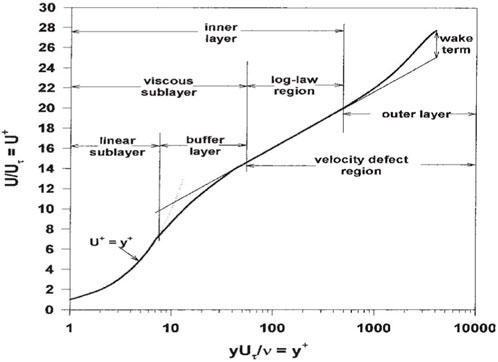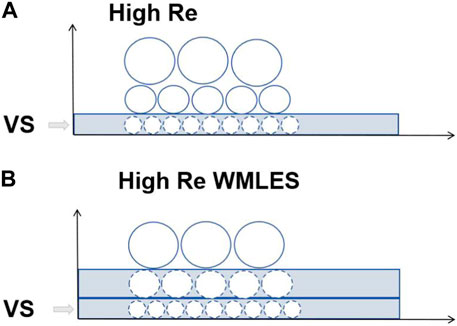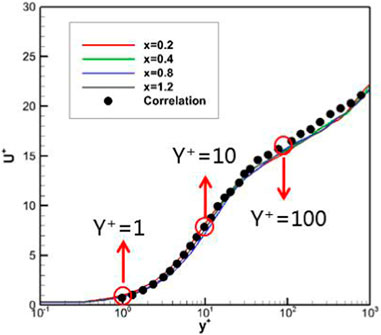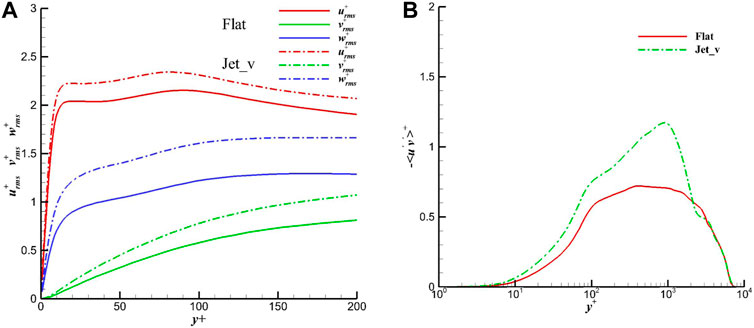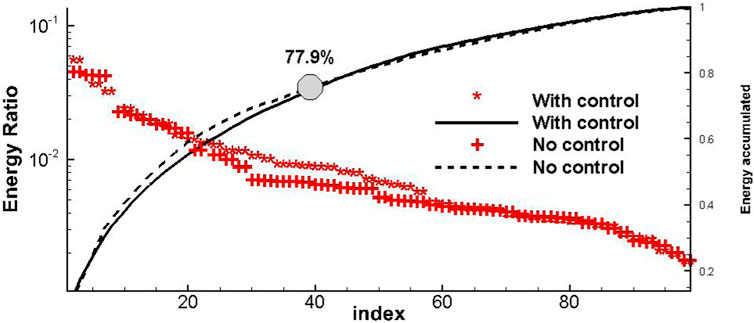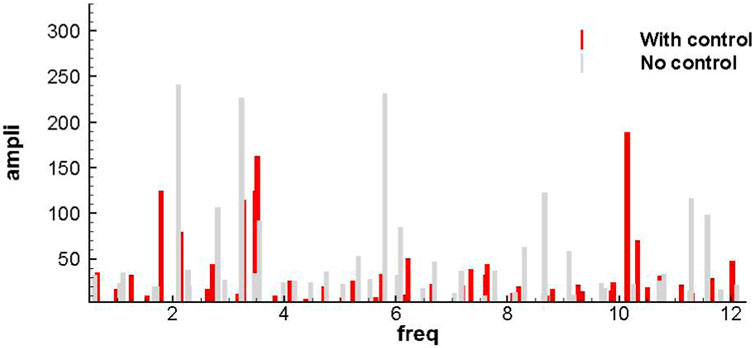- 1Department of Computer Science, Northwestern Polytechnical University, Xi’an, China
- 2AVIC Xi’an Aeronautics Computing Technique Research Institute, Xi’an, China
Drag reduction through turbulent boundary layer control (TBLC) is an essential way to develop green aviation technologies. Compared with traditional approaches for drag reduction, turbulence drag reduction is a relatively new technology, particularly for skin friction drag reduction, and it is becoming a hotspot problem worldwide. This paper focuses on the research of micro fluidic-jet actuators used for outer-layer boundary layer control with high-performance computing (HPC). This study aims to reduce turbulent drag by reshaping the flow structure within the turbulent boundary layer. To ensure the calculation accuracy of the core region and reduce the consumption of computing resources, a zonal LES/RANS strategy and WMLES method are proposed to simulate the effects of fluidic-actuators for outer-layer boundary control, in which high-performance computing has to be involved. The studies are performed on the classical zero-gradient turbulent flat plate cases, in which three different control strategies named “W-control,” “V-control,” and “VW-control” are used and compared to study the effects of drag reduction under a low Reynolds number at Reτ = 470 and a higher Reynolds number at Reτ = 4700. The mechanism for drag reduction is analysed via a pre-multiplied spectral method and a parallel dynamic mode decomposition (DMD) method. The results show that the present approach can effectively simulate the outer-layer turbulent boundary control where the “V-control” with the fluidic-jet actuator array behaves well to achieve an average drag reduction (DR) rate of more than 5% for the high Reynolds number case of the flat plate boundary layer. The high Reynolds shear stress and turbulent kinetic energy distribution in the boundary layer region show an obvious uplift under the effects of actuators, which is the main mechanism for drag reduction.
Introduction
In view of the requirement for civil aircraft, to face the more competitive civil aircraft market and the more rigorous runs environment (e.g., an increase of fuel cost, enhancement of noise, and emission limit), developing a safer, more economical, more environmental, and more comfortable aircraft is a permanent topic or target. Among them, drag reduction is a necessary means to increase the economy of aircraft and keep global competitiveness. The statistical data from the actual flights of civil aircraft indicate that there is a close correlation between drag and fuel economy.
Drag reduction is a fundamental science problem. Since people learned how to utilize aerodynamic forces, drag has been a main issue for aircraft design. In view of mechanics, when the aircraft flies on a cruise, the gravitation of the aircraft is balanced by the lift, and the drag is balanced by the propulsion from engines so that the energy cost of engines is mainly used to overcome drag. Followed Breguet’s approximate range equation for voyage [1], the flying range is farther with a smaller drag and larger ratio of lift to drag, and for a typical large commercial aircraft, when keeping a constant voyage, at least eight passengers (250 pounds per passenger) would be reduced if one drag unit (
In view of fluid dynamics, there are only two types of drag. One is the contribution from the difference in pressure, and the other is from the viscosity of the fluid. However, for convenience in drag reduction design, people usually use an alternative viewpoint to classify the contributions to drag according to the sources of drag, in which the main contributions to drag include the skin friction, the induced drag, the interference drag, the wave drag, the drag from roughness, and the others [2, 3]. In order to reduce these different drags, different pertinent means have to be used [4–6]. Among them, turbulence boundary layer control (TBLC) is becoming a promising way for skin friction drag reduction [7, 8].
In this paper, numerical investigations of outer-layer turbulent boundary layer control for drag reduction through micro fluidic-jet actuators are performed. The primary objective is to establish an effective numerical method to model the turbulent boundary layer and to investigate the effect of TBLC with micro fluidic-jet actuators. To do that, a zonal LES/RANS strategy and WMLES method are proposed for the numerical simulation purpose. Then, numerical studies are performed on the classical zero-gradient turbulent flat plate case with and without micro fluidic-jet actuators. Three different control strategies with the fluidic-jet actuators array named “W-control,” “V-control,” and “VW-control” are used and compared to study the effects of drag reduction, particularly with the outer layer TBLC concept [7, 8], under a low Reynolds number at Reτ = 470 and a higher Reynolds number at Reτ = 4700. The idea can be illustrated by understanding the characteristics of the turbulent boundary layer as shown in Figure 1. It can be seen that a typical turbulent boundary layer consists of four layers: the linear sublayer, the buffer layer, the log-law region, and the wake term. The basic idea of outer layer TBCL here is to directly target existent streamwise vortices to suppress or mitigate the effect of these vortices in the buffer layer, which provides a new sight for turbulence drag reduction other than the traditional ways, e.g., using small riblets to reshape the structure of the boundary layer. For further details, refer to [7].
The full paper is organized as follows. In the first section, the WMLES approach is outlined, followed by some typical validation results. In the second section, the model problems and results for TBLC on the turbulent flat plate boundary layer are presented. Finally, some conclusions with several findings are drawn.
The WMLES Approach and Validation
The present work mainly uses a wall-modelled large eddy simulation (WMLES) approach under a hybrid RANS-LES framework. The formulation starts from the governing Navier-stokes equation with the Favre average, which can be written in tensor form as in Eq. 1:
where
For the traditional LES approach, the SGS stress tensor is often computed via a so-called LES SGS model. Alternatively, for the present WMLES simulation, the traditional Smagorinsky subgrid-scale (SGS) model in LES is replaced with a hybrid one, which can be read as in Eq. 3:
where
and the length scale is defined as in Eq. 5:
The idea of the above WMLES approach can be regarded as using the Prandtl mixing length model near the wall; whereas, away from the wall, it switches over to the Smagorinsky SGS model. Actually, from the model equation (Eq. 1), one can see that when
From the formulation, in the WMLES approach, the RANS portion of the model is only activated in the inner part of the logarithmic layer (at y+< 15–20) and the outer part of the boundary layer is covered by a modified LES formulation. Since the inner portion of the boundary layer is responsible for the Reynolds number dependency of the LES model, the WMLES approach can be applied at the same grid resolution to an ever-increasing Reynolds number, which can be seen as illustrated in Figure 2. As shown in the figure, with the increasing Reynolds number, small-scale eddies confined within the viscous sublayer (VS) would get smaller and smaller such that it is necessary to avoid resolving them by using the WMLES approach. However, even at that, it is worth pointing out that the WMLES is still time-consuming as one kind of time-accurate computation method, and it is necessary to involve high-performance computing during the whole computation procedure [9].
The numerical considerations here include a central difference scheme (which has low numerical dissipation and dispersion), second-order time accuracy, and explicit time integration with dual time stepping. Besides, the two-dimensional VM method is introduced during the procedure for the inflow turbulence generation [10], which seems quite important for an LES or WMLES calculation for practical use.
In order to validate the efficiency of the present WMLES approach, numerical computation for an adverse-gradient flat plate case taken from [11] is performed, and the results are compared with those from the direct numerical simulation (DNS).
The flow condition is at

FIGURE 4. Numerical results for the adverse gradient flat plate case from the WMLES approach: (A) typical transient flow field; (B) comparison of the skin friction distribution with DNS.
Numerical Results of TBCL With Fluidic-Jet Actuator
Model Problems
In Figure 5, an illustration of the model problem of TBCL is shown. In the cases, a zero-gradient flat plate boundary layer with a length of 1.5 m is simulated as base flow, and six small span-wise rectangle slot holes are used to install fluidic-jet actuator arrays, which can take effect both for flow control in stream-wise and in span-wise. In the present study, all the fluidic-jet actuator arrays centre at

FIGURE 5. The model problem of TBCL: (A) set-up for the base flow and (B) set-up for the flow control.
In the simulation, three different control strategies are investigated (as shown in Table 1), which are named “W-control,” “V-control,” and “VW-control.” With such strategies, the fluidic-jet actuator can be modelled numerically by considering its specific application for the outer boundary layer control as in Eq. 6:
where
The computational condition for the model problem can be found in Table 2, where both a low Reynolds number at
For the simulation, for the lower Reynolds number case, the grid with a total cell of around 13.9 million and grid density of
Results for Low Reynolds Number Case at Reτ = 470
In Figure 6, a typical transient flow field coloured by streamwise velocity,

FIGURE 6. Transient flow field of (A) base flow and (B) controlled flow with VW-control at Reτ = 470.
In Figure 7, mean velocity profiles taken at four different locations,
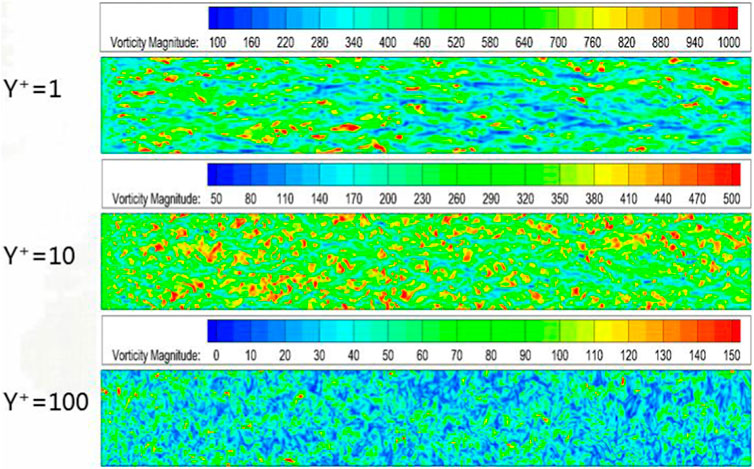
FIGURE 8. Contours of vorticity magnitude at three typical
In Figure 9, the effect of the three different control strategies for drag reduction for the lower Reynolds number case is investigated, where the local drag reduction (DR) rate is defined in Eq. 7:
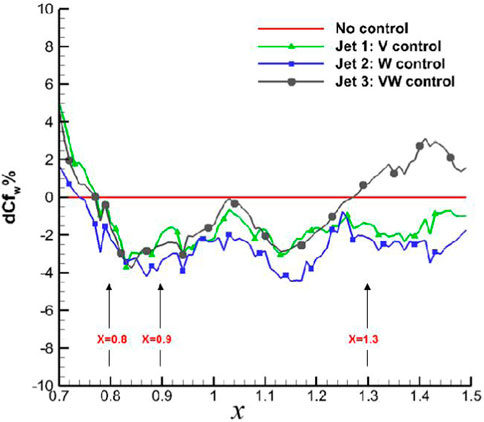
FIGURE 9. The effect of different controls for drag reduction for the lower Reynolds number case at Reτ = 470.
From the result, an averaged local DR rate at 2%–3% for all types of flow control behind the actuator array can be achieved, and comparably, the “V-control” strategy can achieve a robust drag reduction downstream. In Figure 10, the contour of the average skin friction behind the jet actuator array is further shown. From the figure, one can see that different levels of drag reduction can be achieved through present control strategies via micro jet-actuators array.
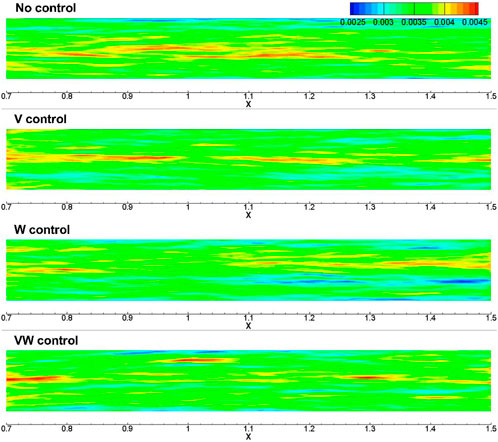
FIGURE 10. Comparison of average skin friction for the lower Reynolds number case between base flow and controlled flow at Reτ = 470.
In order to analyse the origin targeting drag reduction with TBLC for these cases, in Figure 11 gives comparisons of the velocity profile at a typical location,
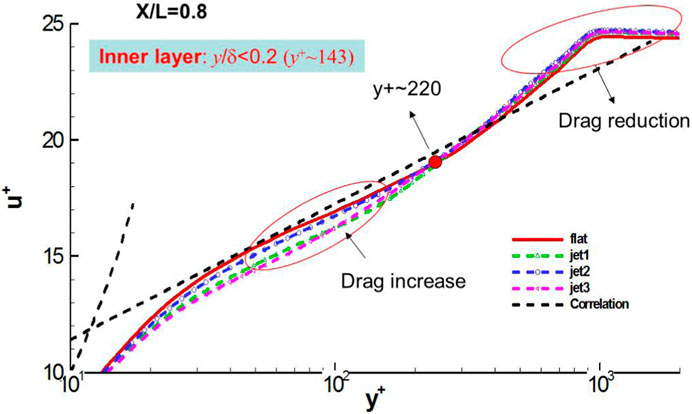
FIGURE 11. Comparison of the velocity profile at a typical location, x
Results for Higher Reynolds Number Case at Reτ = 4700
Based on previous findings with different control strategies at the low Reynolds number case at Reτ = 470, the “V-control” strategy is further investigated for TBLC of the higher Reynolds number case at Reτ = 4700 in this section. In Figure 12, the comparison of the skin friction distribution between the base flow and the controlled flow is shown. It is found that, again, similar to the low Reynolds number case at Reτ = 470, an obvious drag reduction will be achieved for the present higher Reynolds number case at Reτ = 4700.
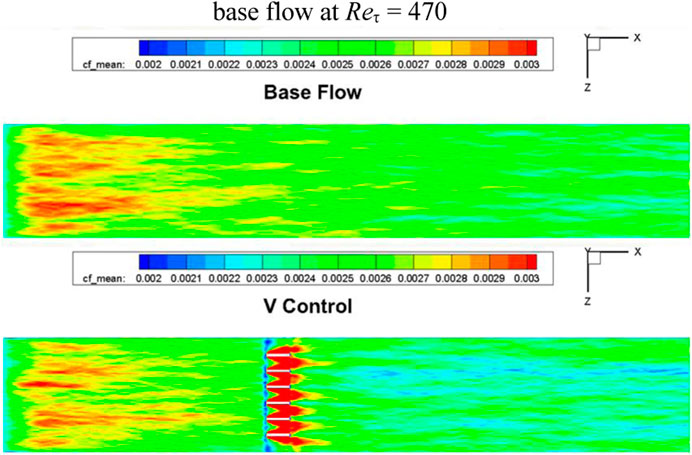
FIGURE 12. Comparison of average skin friction for the higher Reynolds number case between base flow and controlled flow at Reτ = 4700.
In Figure 13, the local DR rate through the present “V-control” strategy is compared. It is found that compared with the low Reynolds number case at Reτ = 470, a larger DR rate will be achieved at Reτ = 4700. The maximum DR rate is more than 6%, and the average DR rate is approximately 5%.
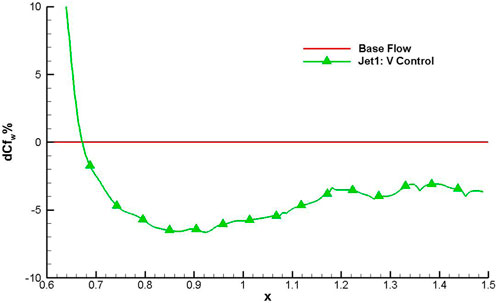
FIGURE 13. Effect of “V-control” for drag reduction for the higher Reynolds number case at Reτ = 4700.
Mechanism Analysis for TBLC
As shown in Figure 14, a consequence of the control is a significant increase in the spanwise inter-streak distance, as determined from the spanwise two-point correlation, suggesting an increase in the scale of the near-wall streaks. Also, the control had a significant effect on the outer structures, in which the control weakened the streaky structure in the outer region.

FIGURE 14. Typical footprints with and without “V-control” at Reτ = 4700: (A) base flow; (B) controlled flow.
Figure 15 shows
Figure 16 further shows the plots of pre-multiple energy spectra for streamwise velocity at x/c = 0.8 with and without control. Again, two peaks, where one is the inner peak and another is the outer peak, which generally occurs only for high Reynolds number flow, can be found for both cases. For the base flow case, the inner peak, associated with the streaks, is at around y+∼15 with λ+∼100, which corresponds to the small-scale motion; meanwhile, the outer peak is at around y+∼100 with λ+∼398. With control, the inner maximum in the spectra moves to y+∼39 with λ+∼170, and the outer maximum to y+∼794 with λ+∼630. As such, one can conclude that present TBLC using a “V-control” strategy with jet-actuators array can result in the outer peak moving forward and result in the intensity of energy spectral increasing as well.
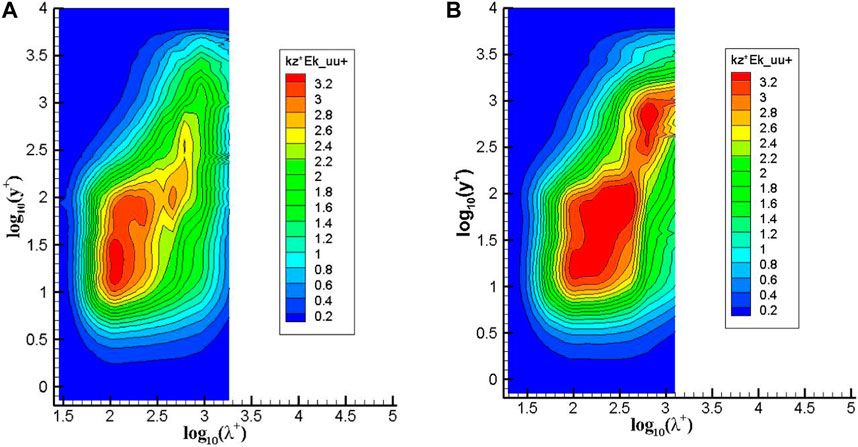
FIGURE 16. Pre-multiple energy spectral for the streamwise velocity at x/c = 0.8 with and without “V-control” at Reτ = 4700.
In order to further investigate the mechanics for drag reduction of the outer layer TBLC for the flat plate boundary layer, a parallel dynamic mode decomposition (DMD) approach is introduced to implement the analysis for the whole flow field [12], where the DMD modes can be ordered according to their contribution to the energy and then examine which frequencies are most influential in terms of the energy contribution. Figure 17 shows energetically ordered distributions of DMD modes for both the canonical and controlled flows at the wall-normal plane
Conclusion
A wall-modelled LES (WMLES) approach combined with high-performance computing is presented for the numerical investigation of outer-layer turbulent boundary layer control for drag reduction through micro fluidic-jet actuators. The studies are performed on the classical zero-gradient turbulent flat plate cases, in which three different control strategies named “W-control,” “V-control,” and “VW-control” are used and compared to study the effects of drag reduction under a low Reynolds number at Reτ = 470 and a higher Reynolds number at Reτ = 4700. Both the pre-multiplied spectral method and a parallel dynamic mode decomposition (DMD) method are introduced for analysis of the mechanism of the outer-layer boundary layer control for drag reduction. From the results, several conclusions can be drawn as follows.
First, it can be marked that the WMLES approach presented in this paper combined with high-performance computing is an efficient way for an accurate prediction of the turbulent flat plate boundary layer.
Second, for the model problem of TBLC based on the zero-gradient flat plate boundary layer, the Reynolds number is an important factor. For the lower Reynolds number at Reτ = 470, an averaged local DR rate of around 2%–3% for all types of flow control behind the actuator array can be achieved, while for the higher Reynolds number at Reτ = 4700, an average local DR rate of around 5%–6% can be achieved.
Finally, both the pre-multiplied spectral method and the DMD analysis indicate that the outer-layer TBLC with fluidic-jet actuator can increase the importance of large-scale structures of the boundary layer such that the structures in the inner layer would be affected. The obvious uplift of Reynolds shear stress and turbulent kinetic energy distribution may be the main mechanism for drag reduction.
Data Availability Statement
The original contributions presented in the study are included in the article/supplementary material, further inquiries can be directed to the corresponding authors.
Author Contributions
The first author, LL, conceptualization, methodology, numerical computation, and draft writing. The second author, JW, conceptualization, data analysis, and draft reviewer. The third author, YL, conceptualization, data analysis, and draft reviewer. The fourth author, ZT, conceptualization, numerical computation. All authors contributed to the article and approved the submitted version.
Funding
This work is partially supported by the China-EU Cooperation project, DRAGY (grant number: 690623), and the Shaanxi Key Research and Development Program (grant number: 2022ZDLGY02-07).
Conflict of Interest
The authors declare that the research was conducted in the absence of any commercial or financial relationships that could be construed as a potential conflict of interest.
References
1. Ma, HD. Drag Prediction and Reduction for Civil Transportation Aircraft. Mech Eng (2007) 29(2):1–8.
2. Valero, E, Abbas, A, and Ferrer, E. Drag Reduction Technology Review. In: 2nd GRAIN2 Open Workshop on “Greening Aviation – A Global Challenge”. Xi’an, China: Chinese Aeronautical Establishment (2005).
3. Reneaux, J. Overview on Drag Reduction Technologies for Civil Transport Aircraft. In: European Congress on Computational Methods in Applied Sciences and Engineering. Jyvaskyla, Finland: ECCOMAS (2004).
4. Obert, E. Aerodynamic Design of Transport Aircraft. Delft, Netherlands: Delft University Press (2009).
5. Zhang, JH, Li, BH, Wang, YF, and Jiang, N. Effects of Single Synthetic Jet on Turbulent Boundary Layer. Chin Phys B (2022) 31:074702. doi:10.1088/1674-1056/ac4bd0
6. Schueller, M, Lipowski, M, Schirmer, E, Walther, M, Otto, T, Geßner, T, et al. Integration of Fluidic Jet Actuators in Composite Structures. In: Proc. SPIE 9431, Active and Passive Smart Structures and Integrated Systems. San Diego, California, United States: SPIE (2015).943113
7. Abbas, A, Bugeda, G, Ferrer, E, Fu, S, Periaux, J, Pons-Prats, J, et al. Drag Reduction via Turbulent Boundary Layer Flow Control. Sci China Technol Sci (2017) 60(9):1281–90. doi:10.1007/s11431-016-9013-6
8. Pierre, R, Martin, S, and Michael, AL. A Review of Turbulent Skin-Friction Drag Reduction by Near-Wall Transverse Forcing. Prog Aerospace Sci (2021) 123:100731.
9. Li, L, Wu, JS, Liang, YH, and Tian, ZD. A Wall-Modeled Large Eddy Simulation Approach Based on Large Scale Parallel Computing for Post Stall Flow Over an Iced Airfoil. J Northwest poly-technical Univ (2023) 41(5):1–10.
10. Zhou, L, Yang, QS, Yan, BW, Wang, J, and Van Phuc, P. Review of Inflow Turbulence Generation Methods With Large Eddy Simulation for Atmospheric Boundary Layer. Eng Mech (2020) 37(5):15–25. doi:10.6052/j.issn.1000-4750.2019.06.0340
11. Wissink, J, and Rodi, W. Direct Numerical Simulations of Transitional Flow in Turbomachinery. J Turbomach (2006) 128:668–78. doi:10.1115/1.2218517
Keywords: flow control, drag reduction, turbulent boundary layer control, micro fluidic-jet actuators, computational fluid dynamics
Citation: Li L, Wu J, Liang Y and Tian Z (2024) Numerical Investigations of Outer-Layer Turbulent Boundary Layer Control for Drag Reduction Through Micro Fluidic-Jet Actuators. Aerosp. Res. Commun. 2:12506. doi: 10.3389/arc.2024.12506
Received: 01 December 2023; Accepted: 24 January 2024;
Published: 20 February 2024.
Copyright © 2024 Li, Wu, Liang and Tian. This is an open-access article distributed under the terms of the Creative Commons Attribution License (CC BY). The use, distribution or reproduction in other forums is permitted, provided the original author(s) and the copyright owner(s) are credited and that the original publication in this journal is cited, in accordance with accepted academic practice. No use, distribution or reproduction is permitted which does not comply with these terms.
*Correspondence: Li Li, d2VzdGxpbGlAMTYzLmNvbQ==; Junsheng Wu, d3VqdW5zaGVuZ0Bud3B1LmVkdS5jbg==
 Li Li
Li Li Junsheng Wu1*
Junsheng Wu1*